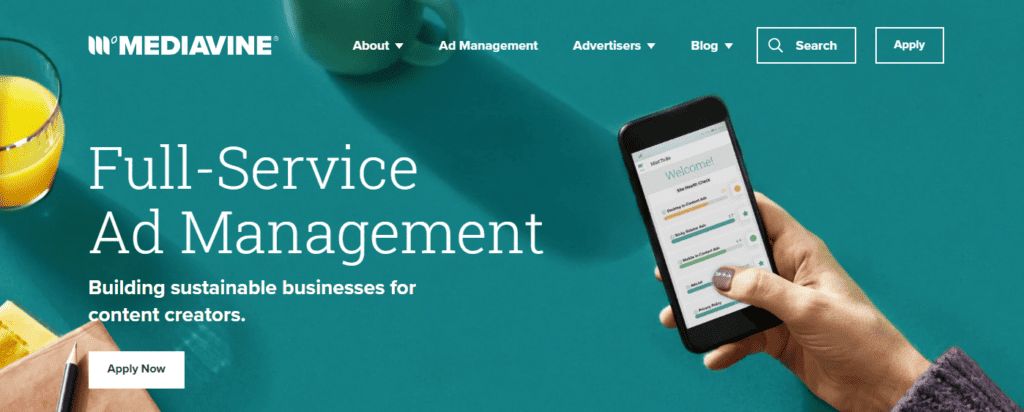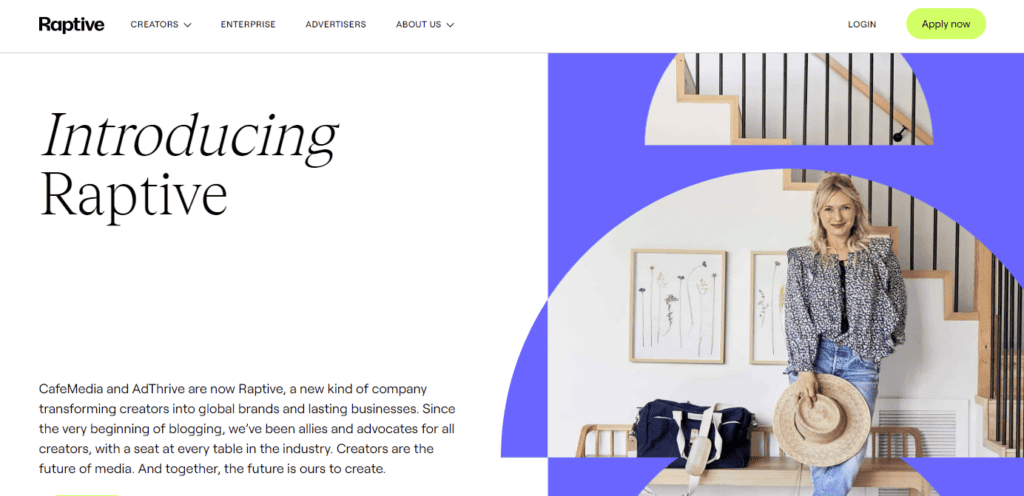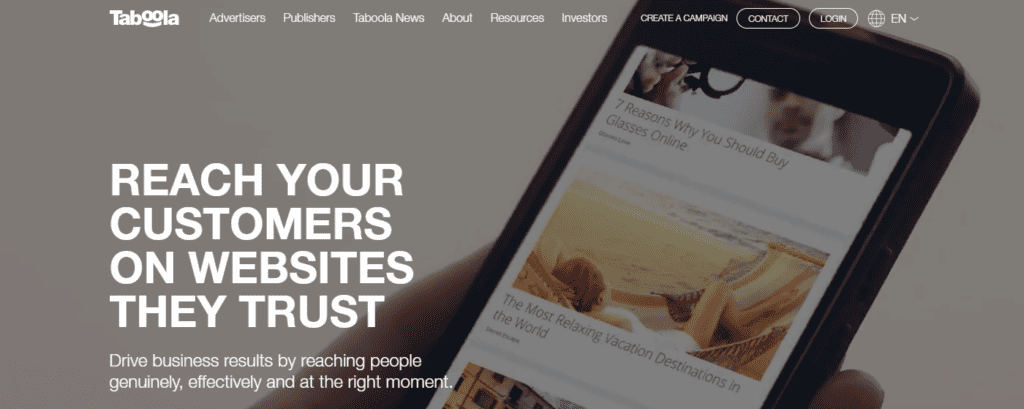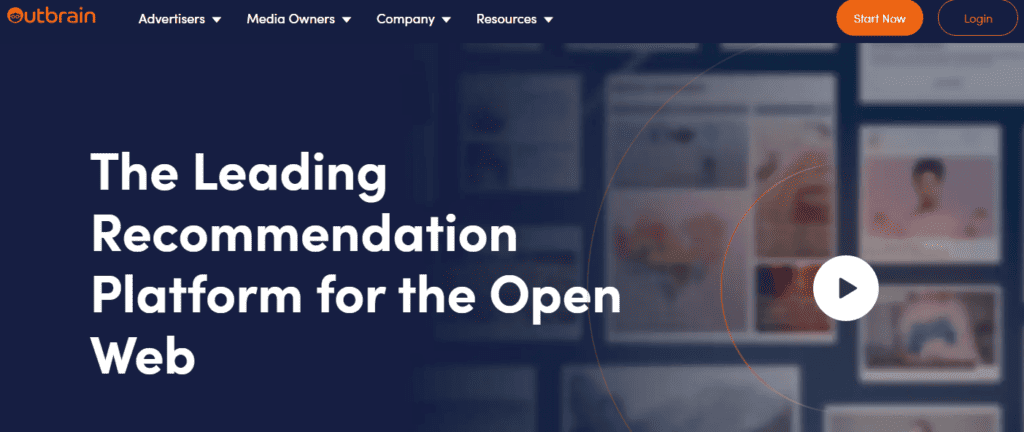
As publishers and bloggers, we all know that monetizing our website is crucial to our success. One of the most popular ways to do this is through ad networks. However, with so many options available, it can be overwhelming to choose the best one for our needs.
In this article, we’ll be exploring these ad networks in more detail, including their pros and cons. Whether you’re just starting out or looking to switch things up, our list of the best ad networks will help you make an informed decision and monetize your website effectively.
1. Media.net

Media.net is a contextual advertising and programmatic platform that provides a wide range of ad formats to publishers. It is the second-largest contextual advertising business worldwide by revenue.
Pros
- High-quality ads: Media.net provides high-quality ads that are relevant to the content of your website. These ads are designed to blend in with your website’s design, which can increase user engagement and click-through rates.
- Multiple ad formats: Media.net offers a variety of ad formats, including display ads, native ads, and video ads. This allows publishers to choose the format that best fits their website’s design and content.
- Competitive payouts: Media.net offers competitive payouts to publishers, with rates that are often higher than other ad networks.
- Easy integration: Media.net’s ad code is easy to integrate into your website, and their support team is available to assist with any issues that may arise.
Cons
- Limited ad inventory: Media.net’s ad inventory is primarily focused on contextual ads, which may limit the number of ads available to publishers. This can be a disadvantage for publishers who are looking for a wider range of ad options.
- Strict approval process: Media.net has a strict approval process, which can make it difficult for some publishers to get approved. This can be a disadvantage for smaller publishers or those with less established websites.
2. Mediavine

Mediavine is an ad management platform that offers a full-service digital advertising technology and management solution for publishers. It is a great fit for bloggers who want to grow their blog and generate a healthy passive income. Here are some pros and cons of using Mediavine.
Pros
- High earnings: Mediavine offers a 70% revenue split, which is a great percentage compared to other ad networks. It is a fair income for bloggers who want to monetize their blog and earn a healthy passive income.
- Great customer support: Mediavine has a great customer support team that is available 24/7. They are knowledgeable, friendly, and always ready to help. They provide publishers with a dedicated account manager who helps them optimize their ads and increase their revenue.
- Easy setup process: The setup process for Mediavine is easy and beginner-friendly. They provide publishers with a plugin called Trellis, which helps them optimize their site for speed and performance. They also provide publishers with a dashboard that is easy to use and provides them with all the information they need to manage their ads.
- High-quality ads: Mediavine provides publishers with high-quality ads that are relevant to their audience. They use advanced ad targeting technology to ensure that the ads are displayed to the right audience at the right time.
Cons
- High traffic requirements: Mediavine requires publishers to have at least 50,000 sessions per month to be eligible for their program. This can be a barrier for new bloggers who are just starting out.
- Strict ad policies: Mediavine has strict ad policies that publishers must follow. They do not allow certain types of ads, such as pop-up ads, auto-play video ads, and adult content. Publishers must ensure that their site complies with Mediavine’s policies to avoid getting banned from the program.
In conclusion, Mediavine is a great ad management platform for publishers who want to grow their blog and generate a healthy passive income. It offers high earnings, great customer support, and an easy setup process.
3. Raptive (previously AdThrive)

Raptive is a popular ad network that focuses primarily on bloggers and publishers in lifestyle areas such as food, home, travel, parenting, DIY, etc. They offer a premium ad management service that helps publishers increase their revenue while maintaining a good user experience.
Pros
- High revenue potential: Raptive’s strict approval process ensures that only high-quality publishers are accepted into their network. This means that they attract premium advertisers who are willing to pay top dollar for ad space. As a result, publishers can earn significantly higher revenue than with other ad networks.
- Excellent customer support: Raptive is known for their exceptional customer support. They offer a dedicated account manager to each publisher, who is available to help with any questions or concerns. They also provide regular reports and insights to help publishers optimize their ad strategy.
- User-friendly dashboard: Raptive’s dashboard is easy to use and provides publishers with a wealth of information about their ad performance. Publishers can view real-time stats, revenue reports, and more. The dashboard also allows publishers to control the types of ads that appear on their site, ensuring a good user experience.
Cons
- High traffic requirements: Raptive requires publishers to have at least 100,000 pageviews per month to be eligible for their program.
- Strict approval process: While Raptive’s strict approval process is a pro in terms of revenue potential, it can also be a con for some publishers. They have high standards for the quality of content and traffic, which means that some publishers may not be accepted into the network.
Overall, Raptive is an excellent choice for publishers who are looking to increase their revenue and maintain a good user experience.
4. Ezoic

Ezoic is an AI-based ad optimization platform that helps website publishers increase their ad revenue. Here are some of the pros and cons of using Ezoic.
Pros
- AI-based ad optimization: Ezoic uses machine learning to optimize ad placements, sizes, and types to maximize revenue while maintaining a good user experience. This means that you don’t have to manually test different ad configurations to find the best one.
- Easy to use: Ezoic’s platform is user-friendly and easy to navigate. The dashboard provides detailed analytics and insights into your website’s performance, so you can make informed decisions about your ad strategy.
- Multiple ad formats: Ezoic supports a wide range of ad formats, including display ads, native ads, and video ads. This gives you more options to monetize your website and reach a wider audience.
- Low traffic requirements: To join Ezoic’s platform, your website needs at least 10,000 monthly visitors.
Cons
- Learning curve: While Ezoic’s platform is easy to use, it may take some time to learn how to use all the features effectively. You may need to experiment with different ad configurations and monitor performance to find the best strategy for your website.
- Limited control over ad placement: While Ezoic’s AI-based optimization is designed to maximize revenue while maintaining a good user experience, you may not have complete control over where ads are placed on your website. Some publishers may prefer to have more control over ad placement.
Overall, Ezoic is a great option for website publishers who want to maximize their ad revenue without sacrificing user experience. The platform’s AI-based optimization, easy-to-use dashboard, and multiple ad formats make it a popular choice for many publishers.
5. Monumetric

We have found Monumetric to be a reliable and publisher-friendly ad network that can help you monetize your website without harming the user experience.
Pros
- Header bidding: Monumetric’s header bidding technology ensures that publishers get the highest-paying ads for their inventory.
- Dedicated support: Monumetric provides dedicated support to its publishers, helping them optimize their ad placements and increase revenue.
- User experience: Monumetric is committed to preserving the user experience, ensuring that ads don’t negatively impact the website’s performance or load times.
- Low traffic requirements: Monumetric requires publishers to have at least 10,000 monthly page views to join the network.
Cons
- Long approval process: Monumetric’s approval process can take up to 30 days, which can be a drawback for publishers looking to monetize their website quickly.
- Limited ad formats: Monumetric only offers display ads, which may not be suitable for all publishers.
Overall, we believe that Monumetric is a great ad network for publishers looking to monetize their website without compromising the user experience. With its high CPMs, header bidding technology, and dedicated support, Monumetric can help publishers increase their revenue and grow their website.
6. Taboola

Taboola is a well-known native advertising platform that offers publishers an opportunity to monetize their content. With over 1.4 billion users and partnerships with top publishers, Taboola is one of the most popular ad networks available.
Pros
- Wide reach: Taboola offers access to a vast network of premium publishers, which means that your content can reach a large audience.
- High-quality ads: Taboola’s ads are designed to blend in with the publisher’s content, making them less intrusive and more effective.
- Personalized recommendations: Taboola uses machine learning algorithms to display personalized content recommendations to users, which can increase engagement.
Cons
- Low revenue share: Taboola’s revenue share is lower than some other ad networks, which means that publishers may earn less money per click.
- Limited control: Publishers have limited control over the ads that appear on their site, which can be a disadvantage for those who want more control over their content.
Overall, Taboola is a solid option for publishers who are looking to monetize their content. With its wide reach and high-quality ads, Taboola can help publishers increase their revenue and engage their audience.
7. Outbrain

Outbrain is a leading native advertising platform that partners with thousands of publishers worldwide, offering them access to a wide range of advertising formats that can help them monetize their content.
Pros
- High-quality traffic: Outbrain has a vast network of premium publishers, which means that your ads will be displayed on reputable websites with high-quality traffic. This can help increase your brand’s visibility and drive more traffic to your website.
- Advanced targeting options: Outbrain offers advanced targeting options that allow you to reach your target audience with precision. You can target your ads based on various factors such as location, device, interests, and more.
- Content discovery: Outbrain’s content discovery feature allows publishers to promote their content to a wider audience, increasing their reach and engagement.
- Revenue sharing: Outbrain offers publishers a revenue-sharing model, which means that publishers can earn a share of the revenue generated from their ads.
Cons
- Limited control over ad placement: Publishers have limited control over where their ads are displayed on Outbrain’s network. This can be a disadvantage for publishers who have specific requirements for ad placement.
- Low click-through rates: Some publishers have reported low click-through rates on Outbrain’s network, which can result in lower revenue for publishers.
Overall, Outbrain is a reliable and reputable ad network for publishers who want to monetize their content. With its wide range of targeting options and content discovery feature, Outbrain can help publishers reach a wider audience and increase their revenue.
Conclusion
In conclusion, choosing the right ad network is crucial for the success of any publisher or advertiser. With so many options available, it can be overwhelming to decide which one to choose. However, by considering factors such as ad formats, payment options, and targeting capabilities, publishers and advertisers can make an informed decision.
It is essential to keep in mind that no ad network is perfect, and each has its pros and cons. Therefore, it is crucial to test and experiment with different networks to find the one that works best for your specific needs.
Frequently Asked Questions
What are some high paying ad networks for publishers?
The highest paying ad networks for publishers are Mediavine and Raptive. However, it’s important to note that payout rates can vary depending on factors such as website traffic, niche, and ad placement.
Which ad network is the largest in the world?
Google AdSense is currently the largest ad network in the world, with over 2 million publishers using the platform to monetize their websites. AdSense offers a variety of ad formats, targeting options, and optimization tools to help publishers maximize their earnings.
